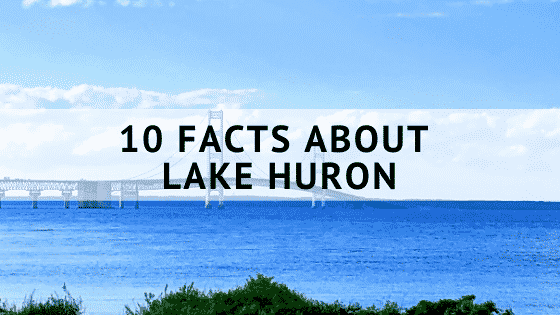
How well do you think you know Lake Ontario? Many assume Lake Ontario got its name from the Canadian province, but the province was actually named after the lake. It is the easternmost Great Lake and bordered by Ontario, the Canadian province, and New York. Although it is the only Great Lake that is not bordered by Michigan, it is still important to our state because the other four lakes drain into it. Test your knowledge with these 10 interesting facts about Lake Ontario.
1. Lake Ontario is the 14th largest lake in the world.
It has a surface area of 7,340 square miles. It is, however, the smallest of the five Great Lakes.
2. Lake Erie, although larger in surface area, is closest in size to Lake Ontario.
Lake Ontario has an elevation of 243 feet above sea level which is 326 feet lower than Lake Erie. While Lake Erie has a larger surface area and higher elevation, Lake Ontario’s volume holds four times as much water.
3. Depending on the severity of the winter, a sheet of ice can cover between 10% and 90% of the lake.
The lake typically freezes along the edges, closing many harbors during the winter months, however, it is rare for Lake Ontario to freeze over completely. It has only been recorded doing so five times.
4. Lake Ontario’s water is sometimes white.
The majority of the time Lake Ontario is blue. Occasionally an increase in calcium carbonate can make the water appear white.
5. Several treasures can be found in Lake Ontario.
It is the location of the second-oldest Great Lakes shipwreck from 1862 and a U.S. Air Force C-45 aircraft.
6. Legend has it, the ball from Babe Ruth’s first major league home run landed in Lake Ontario.
Babe Ruth hit a home run at Hanlan’s Point Stadium on the Toronto Islands that is said to have landed in Lake Ontario and is still there.
7. You might want to think twice about searching for that Babe Ruth ball though.
Not only did it happen over one hundred years ago, but only 65 people have successfully swum across Lake Ontario as of 2019. Marilyn Bell was the first person to swim across the lake in 1954; she was 16 at the time.
8. Lake Ontario is home to the Thousand Islands region, an archipelago of 1,864 islands.
The majority of the Thousand Islands region are small, but the Lake does have some significant islands. A few noteworthy being Amherst Island, Association Island, Galloo Island, Little Gallo Island, Waupoos Island, and Wolf Island. Wolf Island is the largest in the lake and is home to a church, a bakery, restaurants, and 1,400 people.
9. Along Lake Ontario’s 712 mile shoreline you will find over one hundred beaches.
In the Canadian town, Wasaga Beach along the lake’s shore is the longest freshwater beach on Earth.
10. Lake Ontario is also home to giant goldfish, yes goldfish.
Most of the goldfish start as home pets in fishbowls or ponds but make their way to the lake during flooding or by being released and can grow to a massive size in the wild. Lake Ontario is also inhabited by plenty of walleye, trout, salmon, and bass. The American eel was once the most common fish in the lake but is now endangered.


